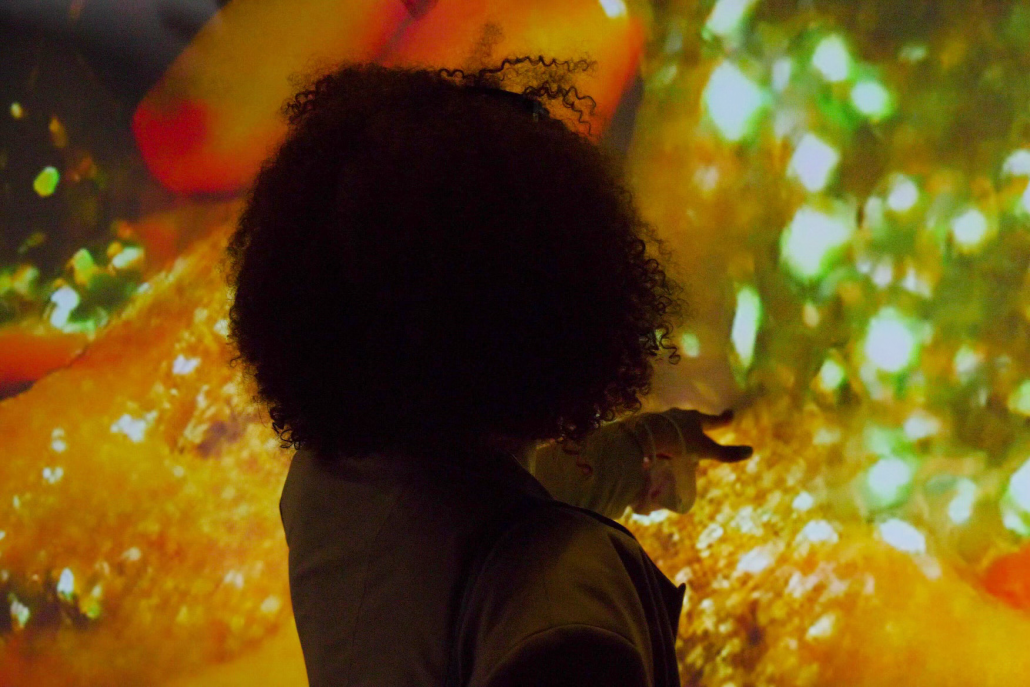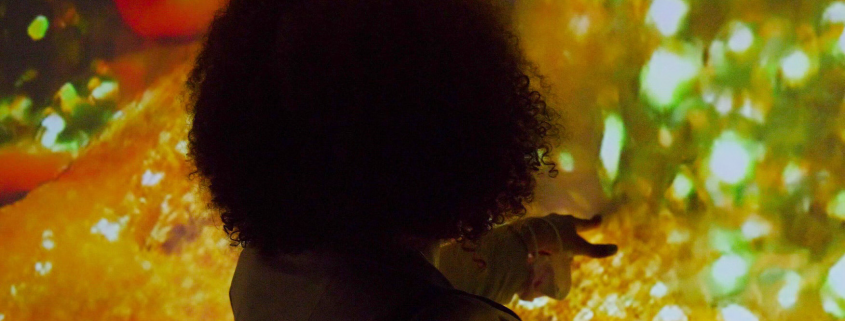Olivia Peace brings dreams to reality

At the intersection of lucid dreaming and artificial intelligence stands Olivia Peace.
Peace received the 2022 Student Academy Award in the Alternative/Experimental category for their film “Against Reality,” at a ceremony held last week at the Academy Museum, following September’s winner announcement.
“Against Reality” is an innovative film that used artificial intelligence to generate imagery representative of Peace’s experience with lucid dreaming. Peace’s work is often put under the category of “new media” which Peace describes as “a funny word for just like rigamarole — things that aren’t quite a film but aren’t quite a video game, things that kind of exist in this in between space.”
“Against Reality” began early on in the pandemic, when — for the first time since childhood — they began having vivid “prophetic” dreams. After they noticed both their friends and people on Twitter having similar experiences, they set off to make a short documentary about “dreams in the wake of this pandemic” with two friends.
“This was going to be our pandemic project,” Peace said. “While other people were baking bread or learning how to skate, that was our thing.”
Peace and their friends began to interview scientists specializing in dreams and neurology about their vivid dreams, and Peace said that what they learned through those interviews completely “opened [their] mind.”
While the project began as a science-oriented documentary, they said that as artists it quickly shifted to a focus on the spiritual practice of dreaming. Peace and their friends began writing down their dreams nightly in what they called a “dream circle,” which led Peace to eventually learn how to lucid dream.
For Peace, dreams began to seem like “the key to everything,” with dreams influencing their life and creative endeavors.
“I had this idea that dreams are just kind of this random thing that happens at night, that’s just silly and not really worth looking into too much,” Peace said. “But I found that the more that you allow them to be meaningful to you, and the more you take your time to listen to them or try to process and understand them, the more that they can actually be helpful in your waking life, if that’s what you want.”
Peace’s friends eventually told them that the film “should be a story in [their] own voice,” which led Peace to make the film “Against Reality” as their thesis project for their master’s degree in Interactive Media and Games.
“When students want to do a film, it’s a reasonable question to say ‘are they in the right program?’” said Peter Brinson, a professor of interactive media and games at the School of Cinematic Arts and one of Peace’s thesis advisors. “Of course, Olivia was, because it’s the new frontier to combine interactive media with the tradition of filmmaking… to give software prompts and that generates imagery based on what you tell it is something we’ll just increasingly see people experiment with.”
While Peace is trailblazing a path for a new era of filmmaking, they never considered cinema as a creative option until they arrived at Northwestern University and discovered there was no illustration program. Feeling lost, a mentor at the university directed Peace toward Northwestern’s film program, and although they fell in love with being on set, Peace still did not see directing as their calling until their senior year project, “Pangaea,” which they said became “a bit of a legend in the school” after their graduation, securing them a spot as a Sundance Ignite Fellow and the directorial position for 2020 feature film “Tahara.”
It was once they began an internship at the Emblematic Group in Santa Monica, a studio focused on using virtual and augmented reality to create films, that Peace was fully able to explore digital media.
Still, Peace only began exploring artificial intelligence for art after seeing it on TikTok.
“It’s almost a new philosophy you have to adapt to work with it,’” Peace said. “With the AI, you are literally typing into it what you want and kind of just hoping for the best and having to surrender to whatever, whatever that might be. Sometimes it’s weird, sometimes it’s scary. I found sometimes it can even be profoundly racist or sexist because it’s pulling from the internet.”
Brinson described Peace’s work as “the future of everything.” He notes that the technology Peace uses is evolving rapidly.
“It’s becoming a new kind of skill, and it requires a different kind of AI to generate and recognize beauty or interest,” Brinson said. “It’s not surprising in retrospect, that Olivia is the one pulling that off.”
“I’m excited to see someone who has such a strong perspective and voice leverage new technology in a way that it’s so impactful and meaningful and accomplishes their vision,” said Kevin Tsukii, who worked with Peace at Emblematic and served as one of their thesis advisors. “It’s not a shtick that they’re employing, but really something that executes their narrative.”
Peace recommends that all people begin writing down and recognizing their dreams, citing the Threat Simulation Theory.
“The [Threat Simulation Theory] hypothesis is that dreams can be this third space where people can practice things that in their waking life are really difficult for them. Let’s say you have a hard conversation coming up or if a big presentation you’re nervous about, you might be able to practice that in your dream,” Peace said. “In your dreams, you find often you have what you need, despite it being scary.”
Dreaming reminds Peace of Mary Oliver’s poem “Wild Geese” where Oliver describes that “you don’t need to be trying to struggle or be so disciplined or diligent.”
“In the dream realm, it’s so easy to do that because there’s no time. There’s no real spatial reasoning in the dream realm. Anything you want, you can actually just have right then and there, and you feel very much, especially when you’re lucid,” Peace said. “If I want to all of a sudden have a Ferrari, there it is, if I want to party with Snoop Dogg, there it is.”
“Against Reality” is the first entry in a trilogy, with parts two and three to be released next year. This first film focuses on Peace’s experience dreaming with “a little hint of religious trauma.” They plan on making part two about the dream recipe they use to lucid dream and part three to be about the pitfalls of lucid dreaming.
While Peace does recommend lucid dreaming, they cautioned others to understand the balance between the dream realm and reality.
“Sometimes when you have been really far on one end of the spectrum, when you learn another way of being, you might snap to the opposite end of that same spectrum,” Peace said. “I would spend my waking life wanting to go back to sleep and wanting to get back in my dreams… almost starting to undermine a little bit the importance of this reality for what was happening in the dream realm, because it was easier. It was more fun, it seemed like I had control over it. But the truth of matter is, they’re both important. They both feed each other.”
However, Peace clarified that another pitfall was that they thought they “had control over the dream realm in the first place.”
With the success of “Against Reality,” Peace has learned to be “right sized,” no longer relying on self depreciation and instead “taking up all the space meant for you.”
“This is one of the first things I’ve made where, instead of people asking me about how I made the film or the sound, people come up and start talking about themselves and talking about their dreams and their nightmares and their religious experiences,” Peace said. “The truth is, I have no idea what people need to see or what they need to experience. All I can do is, live my life, document it in some way and then put it out. That’s it. That’s my responsibility.”

